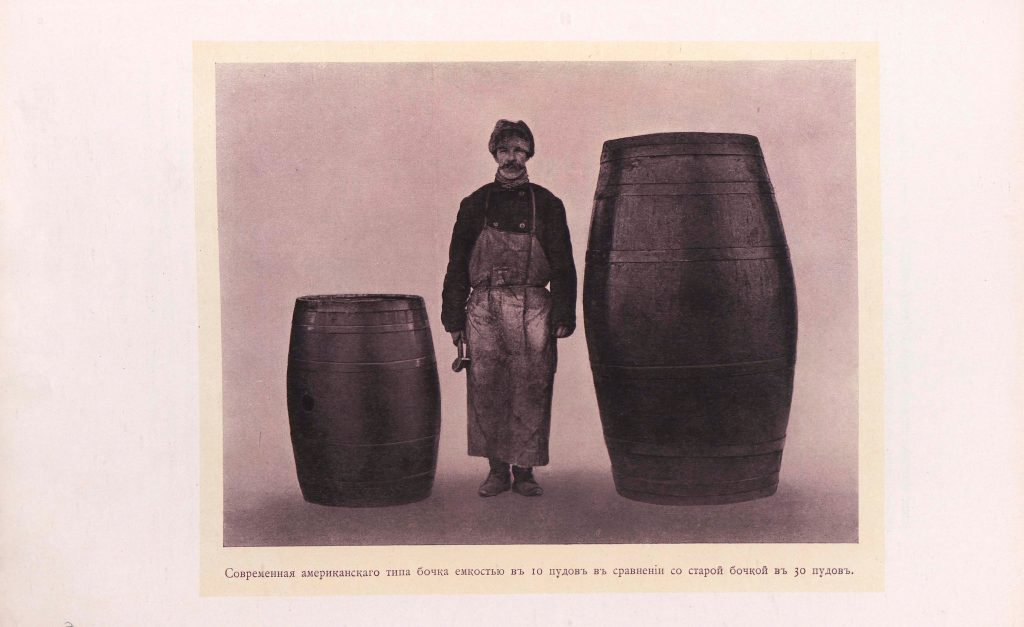20 Years of Attempting to Diversify the Russian Economy – Part II Posted by Nadya on Jun 5, 2020 in History
“Robert has returned to Baku from the east coast of the Caspian sea. He has found excellent naphtha at a depth of 70 feet on Cheleken. Now he has the raw material…” A quotation from a letter of Ludvig Nobel to his brother Alfred Nobel on October 31, 1875
Last time, we pointed out that Russia wanted to get rid of the oil and gas export dependency; looked at the beginning of the petroleum industry in Russia. Today, we will glance at some other major events in oil history.
Golden Gold and Black Gold
Mikhail Sidorov1A researcher of the Russian North since 1859, gold miner, entrepreneur, merchant, writer, zoologist was a Siberian goldmine (золото́й прии́ск) owner, who discovered over 200 deposits of gold (зо́лото) in the Siberian taiga2A very large biogeographic region covered much of Russia from Karelia in the west to the Pacific Ocean (including much of Siberia). Russian taiga has spruces, pines and larches depending on the region, while the Eastern Siberian taiga is a vast larch forest. In 1860, he found numerous placer gold deposits. Soon the residents reported that they found natural oil streams (пото́ки) on the Ukhta riverbanks. Large-scale oil prospecting in the resource-rich (бога́тый ресу́рсами) Ukhta began only in 1868. In 10 years, he arranged the oil industry there. But after he suddenly passed away in 1887, all work was halted. Geologists returned there only 40 years later. Today, the only place of oil and gas extraction using the underground mining (подзе́мная разрабо́тка) method is located next to Sidorov’s well in the Timan-Pechora Basin3Between Timan Ridge and the Ural Mountains in northern Russia, which contains 180 oil and gas deposits.
Siemens
In the 60-70s of the 19th century, the famous German electrical company Siemens & Halske was one of the major investors (инве́сторы) in the Russian oil industry. Three brothers Werner, Carl, and Otto Siemens4A family of German technology and telecommunications industrialists, founders, and today, largest shareholders (of Siemens AG leased (арендова́ли) Mirzan, Shirak, and Eldar oil wells in Georgia5A country in the Caucasus region of Eurasia, was a part of Russia, where they built a new oil refinery. Otto Siemens initiated asphalt (асфа́льт) paving in the Caucasus.
Nobel Brothers
The decisive role in the oil industry of Baku belonged to the family of Swedish industrialists (промы́шленники) Nobel. Three brothers Robert6A businessman, industrialist and investor, Ludvig7An engineer, businessman, one of the world’s richest men, and Alfred8A Swedish chemist, engineer, inventor, businessman, philanthropist. The inventor of dynamite, instituted the Nobel Prize Nobel made a significant contribution to the Russian oil history. Together, they founded The Petroleum Production Company Nobel Brothers, Limited, or Branobel in 1879, which at one point produced 50% of the world’s oil. Robert started the business (би́знес). After analyzing the production (произво́дство), transit (транзи́т), transportation (транспортиро́вка), storage (хране́ние), and marketing (ма́ркетинг), Ludvig began the engineering (проекти́рование) process. Alfred Nobel, the famous scientist (учёный), helped financially (фина́нсово). Branobel created its own transportation and distribution (распределе́ние) network, including oil pipelines (трубопрово́ды), oil terminals (термина́лы) and railway lines (железнодоро́жные ли́нии).
The Rothschilds
In 1883, the Transcaucasian Railway9The first railway in South Caucasus was opened. It connected the Baku oil region with the Black Sea port of Batumi10Currently, the capital of the Autonomous Republic of Adjara and the second-largest city of Georgia. Russian oil now reached the world market. Many foreign investors started to present essential interest toward it. Russia started selling (прода́жа) oil bonds (облига́ции). Soon, almost all of these bonds were consolidated in the Paris banking house of the Rothschild family11The most famous of all European banking dynasties, which for 200 years exerted great influence on the economic and, indirectly, the political history of Europe, led by the legendary financier (финанси́ст) Alphonse James de Rothschild12A French financier, vineyard owner, art collector, philanthropist, racehorse owner/breeder, and a member of the Rothschild banking family of France.
In a short time, Rothschild’s company became the leader (ли́дер) in oil exports from Russia. In 1889, they had 59% of Russian kerosene exports. The Rothschilds dominated the Russian market, while the Nobels were the more efficient producers. Two corporations merged. In fact, it was a collusion. A new company, named Nobmazut appeared in 1903. This resulted in a high increase in the cartel’s share (до́ля) in petroleum product sales. But in 1912, the Rothschilds sold their shares to Royal Dutch Shell, better known as Shell, one of the largest oil and gas companies.
Wars and Revolutions
At the beginning of the 20th century, Russia faced wars and revolutions, which were inevitably characterized by an extremely negative effect on the oil and gas industry.
One of the first steps of the Soviet government in overcoming the crisis (кри́зис) was the nationalization (национализа́ция) of industrial enterprises (промы́шленные предприя́тия). All oil-producing and refining companies, warehouses (склады́), transportation facilities were declared government-owned property. In 1918, the oil sector was monopolized (монополизи́рован).
The country’s economy was in ruins in the post-revolutionary period as well. Even the nationalized oil giants could not produce the necessary economic results; productivity steadily fell. On November 1, 1919, only 204,000 barrels of oil remained in Soviet Russia. It wasn’t until 1920 that the quantity of crude supplied from Baku increased.
In the period of 1920-1930, Soviet Russia (RSFSR – Russian Soviet Federative Socialist Republic) was engaged in the recovery of the oil industry.
However, by the time that restoration was complete, and the country had formally adopted the name Union of Soviet Socialist Republics, World War II began. Without oil, it would have been impossible to confront a technically equipped (техни́чески оснащённый) fascist army. From the outset of the war, one of the military’s strategic missions was to protect the oil wells. The entire industry of the USSR was rebuilt in a military fashion, and the oil industry played a decisive role in it.
We will continue this discussion in the next part.
- 1A researcher of the Russian North since 1859, gold miner, entrepreneur, merchant, writer, zoologist
- 2A very large biogeographic region covered much of Russia from Karelia in the west to the Pacific Ocean (including much of Siberia). Russian taiga has spruces, pines and larches depending on the region, while the Eastern Siberian taiga is a vast larch forest
- 3Between Timan Ridge and the Ural Mountains in northern Russia
- 4A family of German technology and telecommunications industrialists, founders, and today, largest shareholders (of Siemens AG
- 5A country in the Caucasus region of Eurasia, was a part of Russia
- 6A businessman, industrialist and investor
- 7An engineer, businessman, one of the world’s richest men
- 8A Swedish chemist, engineer, inventor, businessman, philanthropist. The inventor of dynamite, instituted the Nobel Prize
- 9The first railway in South Caucasus
- 10Currently, the capital of the Autonomous Republic of Adjara and the second-largest city of Georgia
- 11The most famous of all European banking dynasties, which for 200 years exerted great influence on the economic and, indirectly, the political history of Europe
- 12A French financier, vineyard owner, art collector, philanthropist, racehorse owner/breeder, and a member of the Rothschild banking family of France

Build vocabulary, practice pronunciation, and more with Transparent Language Online. Available anytime, anywhere, on any device.










